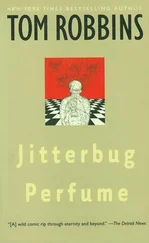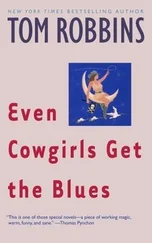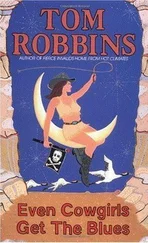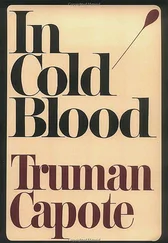I waited for the reaction — but there was none. Not a single symphony buff threatened to cancel her subscription, and although Rossini’s Stabat Mater was based on a Roman Catholic poem about Mary’s grief for Jesus, not one irate Christian petitioned to have me crucified. Curious. Especially so because my art reviews, which were a tad more conventional and a lot more knowledgeable, were generating considerable feedback. At any rate I decided to take silence as an affirmation, and thus encouraged, in my virgin review of an opera (I’ve forgotten which one) a couple of weeks later, I hinted that the performance would have been more riveting, more relevant had the chorus worn black leather jackets, the soprano been a biker chick, and the basso profundo a Hells Angel on speed. Impressed by the music but bored by the opera’s stuffy, stilted ambience, I seem to recall expressing regret there hadn’t been Harley-Davidsons onstage.
Doubtlessly influenced both by my recent purchase of a motorcycle and my abiding admiration for The Threepenny Opera (when I’d seen the über-edgy show in New York in 1961, it had knocked my socks off and fanned searing anti-establishment flames in my heart — though, of course, by traditional standards the Threepenny is an opera in name only), this review, like the Rossini, provoked not even the mildest public rebuke. Mind you, I wasn’t actively soliciting punishment: I, a thin-skinned Cancerian, harbor not one masochistic cell in my body. My critiques were unorthodox simply because when confronted by my supreme ignorance of the subjects I was obliged to evaluate, I had little choice but to play the one wild ace that was always up my sleeve: my imagination.
My next symphony review, one in which I riffed on a piece by the Brazilian Villa-Lobos, liberally sprinkling my article with phrases such as “dense underbrush,” “hot oozing rhythms,” “predatory jungle cries,” and “sophisticated savagery,” also failed to elicit reader fury: nary a hot oozing letter or a predatory phone call. I did, however, receive soon afterward an invitation to a private afternoon cocktail party at the home of Milton Katims, the esteemed conductor of the Seattle Symphony orchestra. What the…?
The Katims occupied a large, low, modern ranch-style house in an upscale neighborhood. I drove around the block two times before parking and wouldn’t have stopped at all had not Susan insisted. My friends in Seattle were scruffy bohemians who frequented the Blue Moon Tavern, but Susan, pining for her Virginia royalist milieu, could scarcely wait to rub shoulders once again with gentry, and never mind that she knew even less about classical music than I.
From the moment I’d opened the invitation, I smelled a rat, albeit a rat with a dab of Chanel No. 5 behind its ears. Surely it was a setup. Once Maestro Katims and his high-toned pals had me cornered in unfamiliar territory, a couple of cocktails under my belt, I’d be grilled, exposed, shamed, ridiculed, and diced into pieces small enough to fit on a canapé. Susan disagreed or didn’t care. She pestered, cajoled, and finally — as some women do so effectively — loosened my resolve with the vaginal wrench.
A uniformed maid admitted us. The clink of glassware and chirp of lighthearted conversation reverberated off elegantly simple furnishings, mostly in beige and white. Near the center of the living room sat a grand piano the size of a gunboat. By the time I’d downed my second cocktail, I could picture it steaming into Havana’s harbor, firing a barrage of Beethoven and Brahms at the Plaza de la Revolución. While Susan mingled, drinking too much and bragging dishonestly about her family back in Richmond, I adopted a nonchalant yet defiant stance on the starboard side of the piano, yet not so close to it that a guest might inquire if I might play.
Before long, the distinguished maestro himself came over, pumped my hand, smiling all the while, and confessed that he and other members of the symphonic and operatic circles had wished to meet the person responsible for those “uh, most unusual reviews” in the Times . I believe he used the adjective “colorful.” Never in his career had Katims read anything quite like them, he confessed. It occurred to me then that the culturati were not so much angered or disgusted by me, not so much contemptuous as they were… well, dumbfounded; that they suspected, bless them, that perhaps I was less an ignoramus than some kind of loose cannon.
Great! I decided that it would be to my advantage to assume the role. The previous day, I’d heard on the radio that a woman in Issaquah, a suburb of Seattle, had been arrested for telling fortunes without a license, so when a member of the opera board asked my favorite opera, I avoided the trap by going on at some length about a libretto I was writing entitled The Gypsy of Issaquah, improvising a melodramatic plot on the spot. You must admit it had an operatic ring.
And when another doyenne inquired more innocently if I had a favorite cocktail, I answered, “Oh, definitely the gin greasy.” She looked blank. “It’s Beefeater and mayonnaise,” I explained. After that, I was pretty much left alone.
The “gin greasy” was no joke. It’s an actual drink. Or it was. Once. Briefly. It did attempt a comeback but, for better or worse, did not succeed.
One Wednesday night, after having dropped Lynda at her dorm just ahead of curfew, I was sitting in my Fan district apartment quietly listening to Billie Holiday or Chet Baker when a couple of friends came to the door, bearing a bottle of Beefeater. I welcomed them enthusiastically, then — since none of us was attracted to drinking gin straight — went in search of something to mix with it.
Upon peering in my refrigerator, Sherlock Holmes would have instantly surmised that (a) I was a bachelor, (b) was less than affluent, and (c) had very specific tastes. The contents of said appliance consisted almost exclusively of ingredients for the swift preparation of my favorite repast: the tomato sandwich. In addition to several tomatoes, a loaf of Wonder Bread, and three (yes, three) jars of Hellman’s mayonnaise, there was in the refrigerator only peanut butter, cottage cheese, and the blueberry pancake syrup that I occasionally drizzled over my breakfast toast. Hmmm? After serious consultation, the three of us were forced to agree that as mixer for the Beefeater, fruit syrup was the logical choice. You yourself may have concurred.
Well, it was awful! Truly terrible. Please, take the advice of one who has gone where no man has gone before him: never pour your gin — cheap or expensive — into blueberry pancake syrup, not unless you’re consumed with self-hatred, have had your taste buds surgically removed, or are a candidate for the title of Epicurean Jackass of the Month.
Okay, back to the drawing board. “How about,” I ventured, only half in jest, “the mayonnaise?” It made sense. After all there are few edible substances on this earth that mayonnaise cannot improve. I believed that then and I believe it now. My companions were understandably skeptical, yet no one moved to interfere when I loaded a heaping tablespoon of Hellman’s into the blender, then added three jiggers of gin.
Once blended, the mixture resembled a young bride’s failed attempt at béarnaise sauce: pale yellow, thin, and runny, like the contents of a zombie’s chamber pot. I filled, in the absence of cocktail glasses, a trio of paper cups with the stuff. Collectively, we closed our eyes and sipped. Then, sipped again. It wasn’t bad. Not bad at all. Even my friends, who lacked the wisdom to recognize that mayonnaise (invented by wanton nymphs who once frolicked in a grotto on the slopes of Mount Olympus) is the true and authentic food of the gods, even my pals had to concede that the gin greasy (as we’d dubbed it) was entirely drinkable — although it may have only been in comparison to the blueberry-pancake-syrup martini. In any case, we finished off the entire bottle of Beefeater that way and felt the better for it.
Читать дальше












